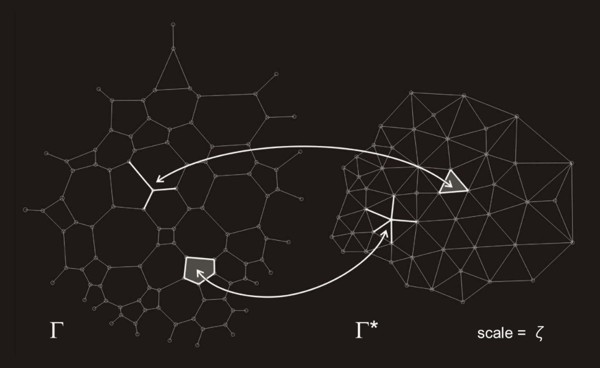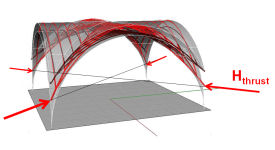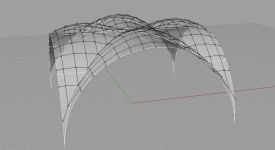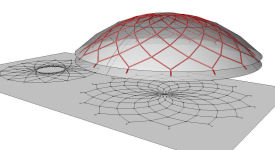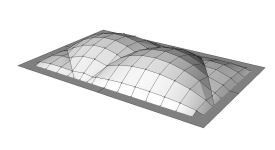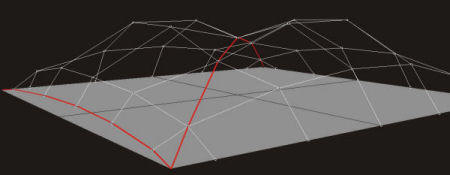| Thrust Network Analysis |
|
|
|
introduction abstract examples papers links INTRODUCTION 5 top |
|
|
|
The work presented on this web page is part of Philippe Block 's PhD research in Building Technology at the Massachusetts Institute of Technology under supervision of Prof. John Ochsendorf. |
|
|
|
|
|
Medieval vault builders explored three-dimensional equilibrium, creating complex shapes carefully balanced in space. The structural properties of these sophisticated forms are still poorly understood because of a lack of appropriate analysis methods, i.e. methods relating stability and form. Understanding the mechanics of these vaulted structures leads to new insights for both analysis and design. This work presents a new methodology to generate compression-only vaulted surfaces and networks. The method finds possible funicular solutions under gravitational loading within a defined envelope. Based on projective geometry, duality theory and linear optimization, it provides a graphical and intuitive method, adopting the same advantages as graphical analysis techniques like graphic statics, but providing a viable extension for these powerful tools to fully three-dimensional problems. Key elements in the proposed process are (1) force networks, representing possible flows of forces through the structure; (2) interactive reciprocal diagrams, visualising the proportional relationship of all forces in the force network and providing a high level of control for the user to understand and manipulate locally and globally the force distributions within the system; (3) the use of envelopes defining the solution space; and (4) linear optimization, resulting in fast computation and visualisation of results. For the input of the vault geometry and the loading conditions and for the output of the three-dimensional results, implementations are written for existing architectural software. This allows for clear visualisations of the results, and the smooth integration of the form-finding process in the design or analysis process.
The proposed method is applicable for the analysis of
vaulted historical structures, specifically in unreinforced
masonry, as well as the design of new vaulted structures.
Key words: Compression-only structures, Unreinforced masonry vaults, Funicular analysis, Thrust network analysis, Reciprocal diagrams, Form-finding, Limit analysis.
|
|
|
|
|
|
|
|
|
|
|
LINKS 5 top |
|
|
|
Massachusetts Institute of Technology Department of Architecture at MIT Masonry Research Group at MIT Interactive Thrust
updated last: 06-05-07 |
|
|
|
|
last updated: 11-08-06
|
